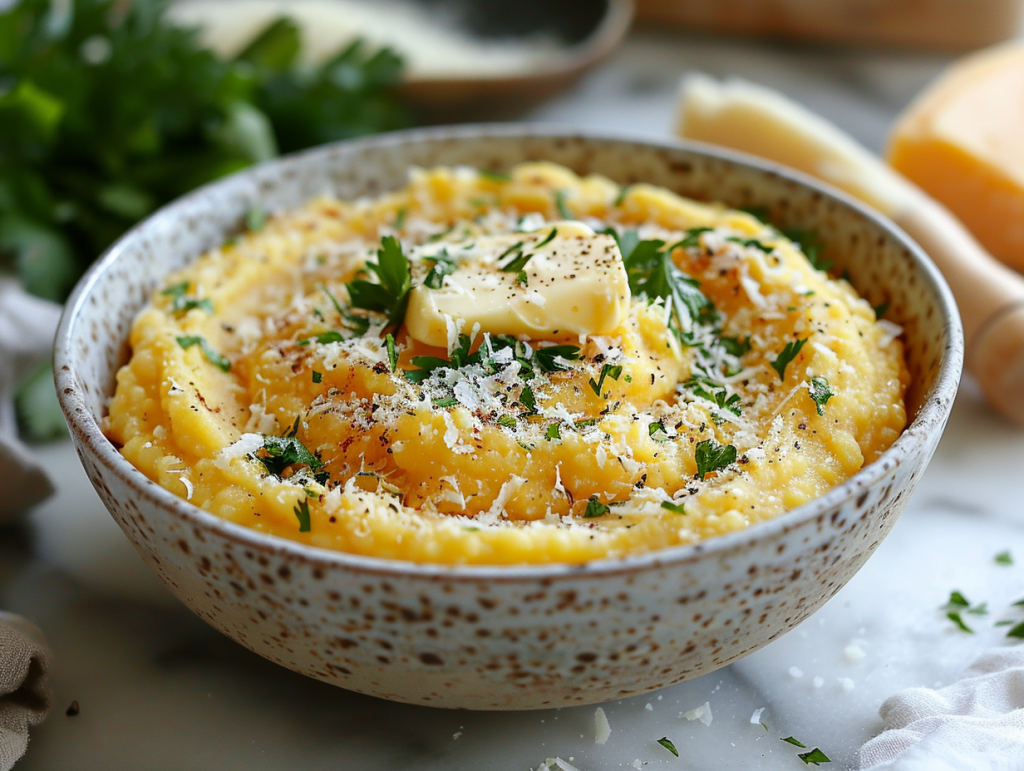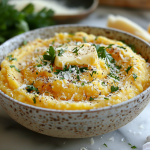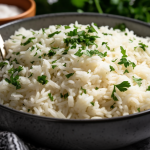Polenta is a versatile, comforting dish made from ground cornmeal that’s commonly associated with Italian cuisine. It’s typically cooked with water or broth to create a creamy, smooth consistency, though it can also be allowed to cool and solidify into a firm, sliceable form. The base flavor of polenta is mild and slightly nutty, making it an ideal canvas for a wide range of toppings and seasonings. Whether served soft and creamy as a side dish or cut into slices and fried or grilled, polenta can be a satisfying accompaniment to meats, vegetables, or rich sauces. Its adaptability makes it a go-to dish for both simple meals and more sophisticated presentations.


Polenta
- Total Time: 40 minutes
Ingredients
- 2 cups water
- 1/2 tsp salt
- 1/2 cup fine yellow cornmeal
- 1.5 Tbsp butter
- 1/4 cup freshly grated parmesan
Instructions
- Boil the water and salt in a pot with a lid.
- Reduce heat to medium-low and slowly add cornmeal, whisking it well with the water.
- Cover the pot and cook for 30 minutes, stirring every 5 minutes.
- Turn the heat off, then stir in 2/3 of the butter and parmesan.
- Transfer to a bowl or plate, garnish with the remaining butter and parmesan.
- Optional: sprinkle parsley or chives on top
- Prep Time: 5
- Cook Time: 35
Traditionally, polenta is made by slowly simmering cornmeal in water or broth while stirring constantly to prevent clumps from forming. This slow cooking process ensures that the texture becomes smooth and velvety. Polenta can vary in consistency depending on the ratio of liquid to cornmeal and the desired result, ranging from soft and creamy to firm and sliceable once cooled. For an extra rich flavor, some recipes incorporate butter, cream, or cheese into the polenta, enhancing its indulgence and making it a perfect side dish for hearty meals.
While polenta is most commonly associated with savory dishes, it can also be made sweet. Some variations feature the addition of sugar, vanilla, or citrus zest, transforming it into a dessert-like treat that pairs well with fruits or a drizzle of honey. The versatility of polenta means it can be adapted to suit different flavor profiles, whether you’re serving it alongside a savory tomato sauce, a rich ragù, or even roasted vegetables. It’s also commonly paired with cheese, making for a decadent dish that’s perfect for both casual family dinners and more formal gatherings.
For a creative twist, polenta can be topped with a variety of flavorful additions such as sautéed mushrooms, braised meats, or a sprinkle of fresh herbs. When served in its solidified form, it can be sliced and grilled or fried, adding a crispy, golden exterior to contrast the creamy interior. Another popular variation is to bake polenta with cheese, creating a flavorful crust. Whether you’re serving it as a side dish or the main event, polenta’s ability to absorb different flavors and textures makes it a favorite among home cooks and professional chefs alike.


